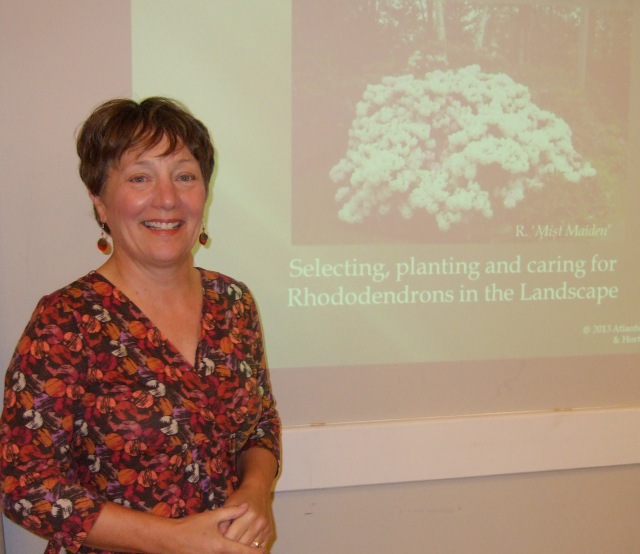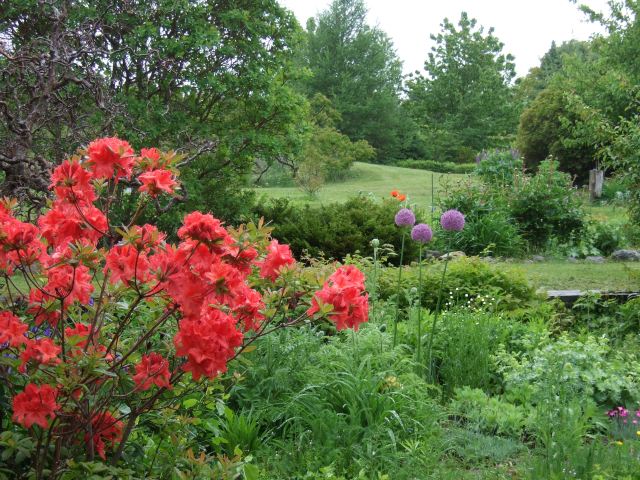Rhododendrons 101
 Members and guests of Chester Garden Club’s were recently treated to an informative presentation by Cora Swinamer, president of the Atlantic Rhododendron and Horticultural Society. Cora, whose firm Under the Arbor has been designing gardens for clients along Nova Scotia’s South Shore for over ten years, has a special fondness for Rhodos, which do particularly well in this climate.
Members and guests of Chester Garden Club’s were recently treated to an informative presentation by Cora Swinamer, president of the Atlantic Rhododendron and Horticultural Society. Cora, whose firm Under the Arbor has been designing gardens for clients along Nova Scotia’s South Shore for over ten years, has a special fondness for Rhodos, which do particularly well in this climate.
In addition to many colourful slides* used to illustrate her talk, Cora handed out a list of the many varieties of Rhodendrons and Azaleas that have been proven to be good performers in our province.

The 39 rhododendrons listed were classed as either Elepidotes, which are the large-leaf plants, or Lepidotes, the small-leafed varieties; or as Azaleas – either deciduous or evergreen. As a tip and memory aid, Cora suggested that the spelling of Lepidote reminds many gardeners of the word “leprechaun”, and someone else chimed in that the initial letters of Elepidote resemble the start of the word “elephant”, so that it should be easy to remember which description fits which category in the future!

All the plants on the list were characterized as to zone tolerance, height, approximate bloom-time, and colour; qualities that are important considerations when selecting any plant for any garden.

Cora pointed out that site conditions are also important when choosing which plant to add to one’s garden. Rhodos require soil with good drainage, thrive in acidic soil, and do well in some shade, although, in Nova Scotia, full sun exposure is not a problem. A useful tip is that “the larger the leaf, the more shade the plant can tolerate.” Exposure to cold weather and stiff winds can cause broad-leafed plants to suffer so, in some cases, a deciduous azalea might be a better choice for planting since they drop their leaves in cold weather.

Cora’s presentation covered many aspects of tending to rhododendrons, including planting, mulching, dead-heading, pruning, and dealing with the one pest that seems to affect these plants: the Black Vine Weevil. She also clarified the terms “tomentosum” and “indumentum” – the fine or matted wooly hair growing on the upper and under side of leaves of some varieties of rhodos. Several lucky members of the audience took home cuttings from a rhododendron branch that Cora had used in her presentation.
* Note: The photos used in this post are not Cora’s but come from a Chester garden.













